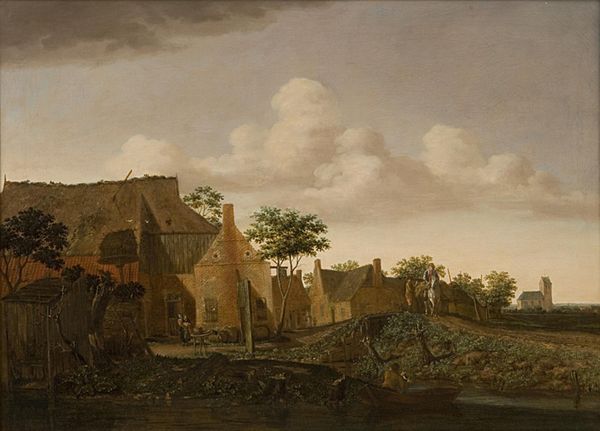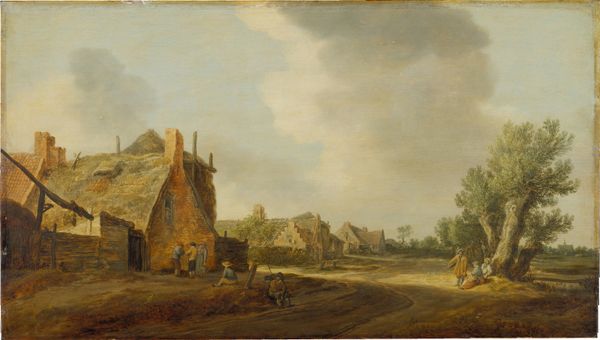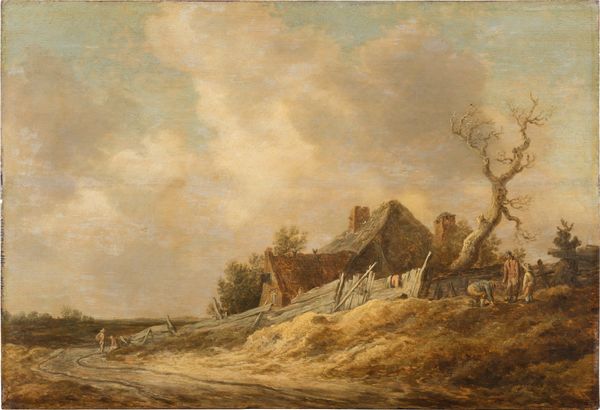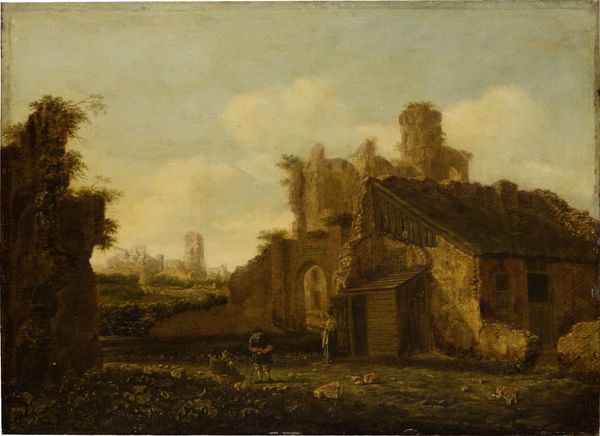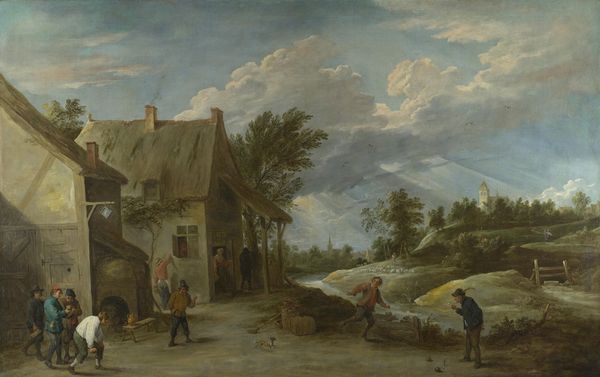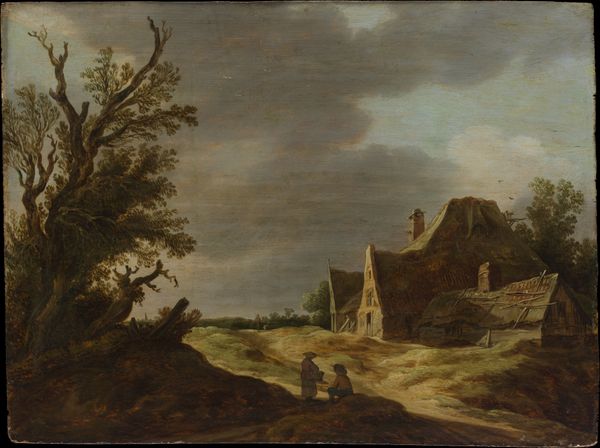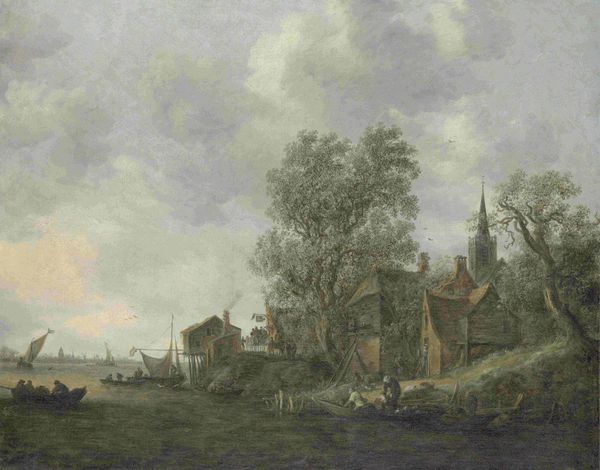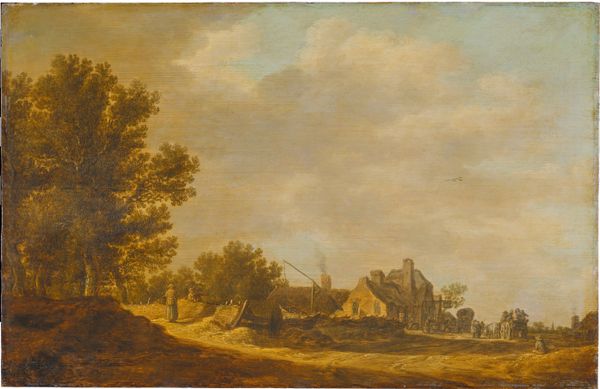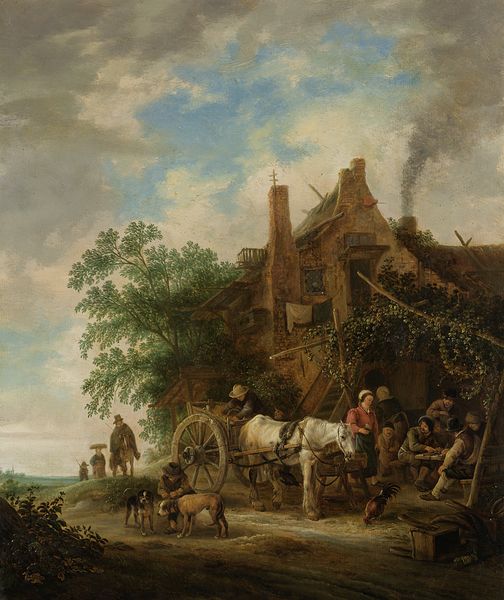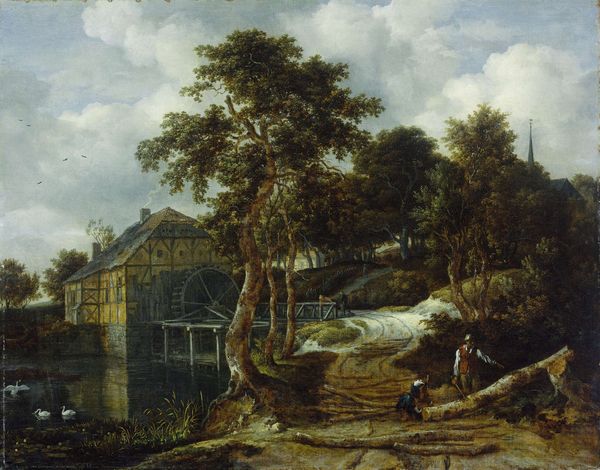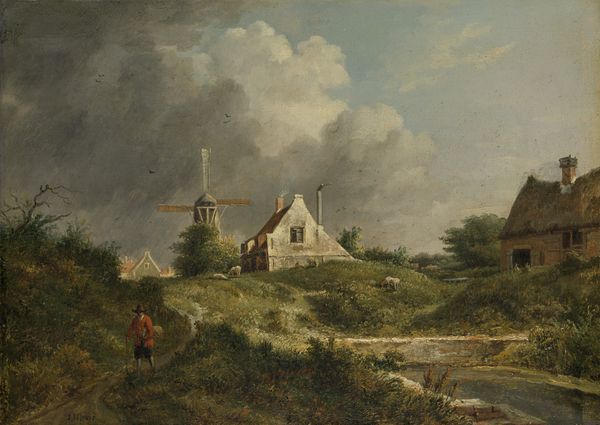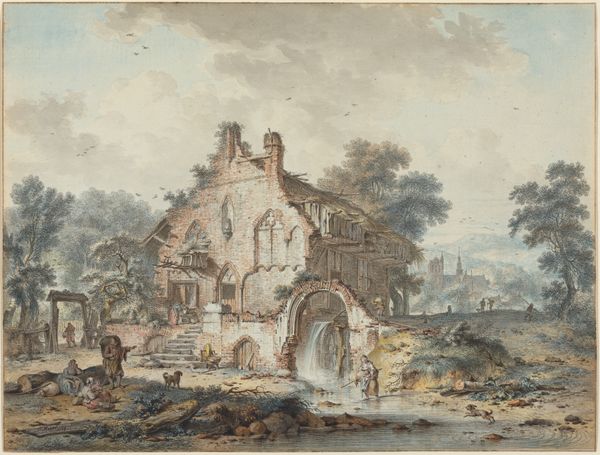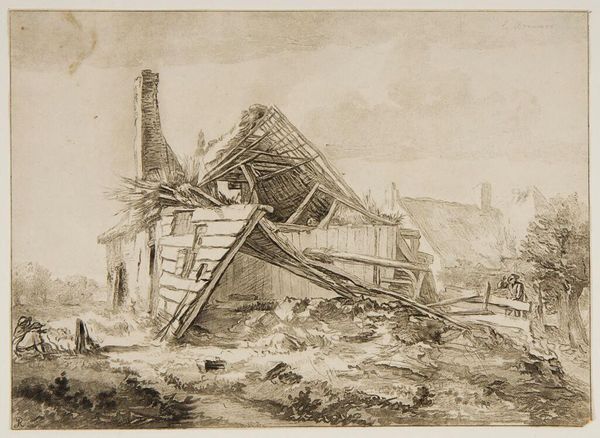
painting, oil-paint
#
baroque
#
painting
#
oil-paint
#
landscape
#
charcoal drawing
#
derelict
#
folk-art
#
genre-painting
Dimensions: height 33 cm, width 41 cm, depth 9.5 cm
Copyright: Rijks Museum: Open Domain
Curator: Here we have Emanuel Murant’s “Farmhouse in Ruins”, likely painted sometime between 1650 and 1700. It's an oil on canvas. What's your initial take? Editor: A palpable sense of desolation hits you, doesn’t it? The house is crumbling, yet there are people...almost like ghosts haunting the remnants of home. There's something about ruins, isn't there, a poignant blend of destruction and resilience. Curator: Indeed. Murant often explored themes of decay, but there's a peculiar beauty in his rendering of the ruined structure. Notice how the chimney, still stubbornly erect, dominates the composition. Chimneys are fascinating symbols of home and hearth, rising high above as a focal point through the scene. It seems to insist on life and permanence, even as the roof crumbles and decays around it. What could this represent? A life almost forgotten or continuing still despite the change. Editor: Right, a sort of defiant presence against oblivion! I am curious about the cultural memory inherent in portraying such decay, as it echoes larger ideas about impermanence that runs through Dutch art of the period, as well as folk stories that pass through the landscape like the seasons. The genre of painting he is working within can become almost like a story etched into pigment; he transforms genre-painting from an individual snapshot into collective memory! Curator: That's insightful. Murant lived through periods of significant social and economic upheaval. Perhaps this ruined farmhouse isn't just a depiction of physical decay, but a symbol of the fragility of human endeavor. Like how the genre and materials intertwine. Editor: Exactly! Even the materials become part of the story. Oil paint, itself a testament to time and preservation, capturing a moment of transience! Think about that! The way visual art itself interacts with symbols is mind-blowing to consider, isn't it? Curator: Absolutely. Looking at the work, the people almost blend with the stones and dirt. I’d be very interested to hear about an alternate ending or imagined happy beginning to their lives here, I really think so. The quiet way the light dapples them offers, even just for a second, such immense healing. It almost seems too quick, but there are moments. It is as if Murant lets the scene fall, breaks it, only to give a brief respite through small, shimmering golden moments, with his signature painting touch. It can make you want to live another’s story with them, so that maybe you too can know that very rare hope. Editor: Such rich moments, like tiny bursts of life amongst decay. I think what sticks with me is how Murant captures the enduring human spirit against a backdrop of loss. A beautiful, sorrowful painting to behold.
Comments
No comments
Be the first to comment and join the conversation on the ultimate creative platform.
